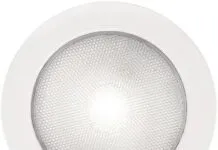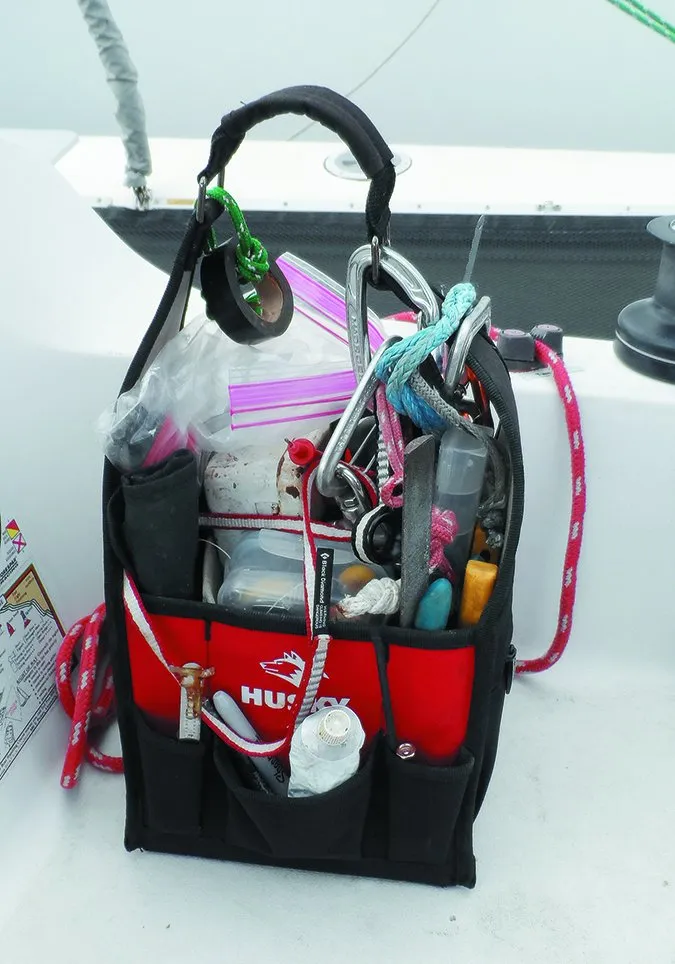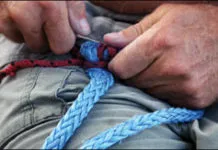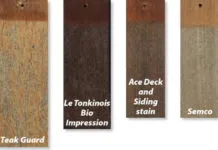Testers Take Tacktick and Nexus Wind Instruments for a Spin
Practical Sailor testers compared Tackticks improved Race Master system to the Nexus Start Pack 3, a hybrid wired/wireless system. The Tacktick Micronet wireless wind instrument, a compact system featuring wireless display and a masthead sensor, has a strong following among racers. It has proven to be a good choice for those sailors serious about improving race performance as it has many options for tracking performance on the course in real time. Its ability to work with a 12-volt system makes it a good choice for small boats. The versatile, expandable Nexus hybrid has an impressive and intuitive interface and a graphic analog wind representation. It provides all of the basic functions a cruiser or racer uses most, and testers found the analog wind display appealing.
Shorepower Cop
Billed as the worlds only shorepower corrosion detector with reverse polarity indicator by West Marine, Marincos new Galvan-Alert attaches to your existing 30-amp shorepower inlet and power cord and monitors galvanic and stray current corrosion flowing through the green ground wire ground of your shorepower system. Appearance-wise, the GalvanAlert is similar to a miniature Marinco power cord. It is well constructed and utilizes the same plugs, connectors, and locking rings that are familiar to most every boater with an AC shorepower cord. The GalvanAlert has four LED indicators-a green LED to indicate power, a red LED indicating reverse polarity, and two other LEDs to show medium (green) and high (red) galvanic corrosion activity.
Shop-to-Go
It probably comes as no surprise to our readers that Practical Sailor editors are serious gadget junkies. Our jobs feed our habits with a steady supply of gear to play with, disassemble, and subject to mild abuse. The latest product to evoke the "kid in the candy store" reaction from our staff was the Power8workshop Delux. Powertools, in particular, hold a special place in our hearts, and this was a whole box of cordless powertools, neatly kitted in a plastic and stainless carrying case, promising workshop capability anywhere with space enough to put the 23-by-12-by-16-inch setup.
Gripping Hitches for Loaded Lines
Testers evaluated five different knots to determine which would be the ideal for holding a tensioned line. Testers considered ease of tying and untying, ease of learning and recall, and holding power with various types of line. The old standard rolling hitch was pitted against the modified rolling hitch, icicle hitch, gripper hitch, and sailors hitch.
Diesel Biocides Take On Contaminated Boat Fuel
Biological contamination of a fuel tank is a true challenge to any boater. Once the tank is infected with bacteria, an absolute cleansing of all contaminating organisms is necessary, or else the surviving organisms will repopulate the tank. Practical Sailor took a look at how fuel contamination occurs and tested six biocide fuel additives to combat a tank infected with microbial bacteria. Biobor JF, Racor, Stanadyne, Star brite, and ValvTect biocides were tested against diesel cultures shown to have a variety of bacterial and fungal species present. Similar to the effectiveness of antibiotics, the effectiveness of the biocides can varying depending on the type of infection they are fighting, testers found.
Bluewater Sailors Review Tethers Underway
Practical Sailor had a chance to compare how three common snap hooks and three tether types function in actual use on a passage from Boston to Bermuda. Testers evaluated the pros and cons of elastic tethers and non-elastic tethers, double-legged tethers, single-leg tethers, the new Kong snap hooks, carabineer-style safety clips, and the Gibb-style clip. The Wichard elastic single-leg tether (nearly identical to our 2007 tether test favorite from West Marine, the West Marine 6-foot elastic tether with Wichards double-action hook at the deck end) was unanimously preferred over the non-elastic tether. Testers also preferred the Kong snap hooks over the others.
Six-Month Checkup: Long-Term Boat Wood Finish Exposure Test
Practical Sailor closes in on its search for the best teak oil, best marine varnish, and best synthetic wood finish this month. Testers check in on the 53 coated wood panels on our test rack, which have been enduring the elements for six months. Testers rated the panels for single-season gloss and color retention and coating integrity. The test products included dozens of one-part varnishes, two-part varnishes, synthetic wood finishes and stains, spar varnishes, wood sealants and teak oils from makers like Interlux, Pettit, Epifanes, Le Tonkinois, Minwax, Ace Hardware, Star brite, and West Marine. The long-term evaluation aims to find the best exterior wood finish based on overall ratings for ease of application, gloss integrity and appearance, and how the coating fares over time under real-world conditions. At the six-month mark, this report offers our single-season recommendations for finishing teak decks, cockpit trim, toerails, and other exterior wood surfaces.
Rust Busters: Spray Solutions for Seized Fasteners and Other Metal Hardware
For those of us living, working, and playing on the water, rust can show up all too often, as the trailer for one of Practical Sailors test boats recently reminded us. Testers tried four aerosol products marketed as penetrating oils-WD-40, Liquid Wrench, PB Blaster, and CRC Freeze-Off-on the rusted U-bolts, and seized nuts and bolts of the neglected trailer to determine which is the best rust buster.
Next Best Thing
While world leaders and presumed financial wizards set to work trying to right the global economy with some very expensive bailers and sponges, Practical Sailor has taken the time this month to dig through our recent collection of Chandlery submissions to see if we can find anything more useful. Given sailors capacities for innovation (aka "jury rigging"), were holding out hope that the next great invention-the ultimate stimulus package-lies somewhere in our growing stockpile of Chandlery items.
The Great Metal Polish Showdown
Practical Sailor last tested metal polishes in March 2007, and the best choice for most jobs was the Miracle Cloth. The treated cloths best feature is its ease of use. Since that test, Practical Sailor has come across a couple other products: another impregnated cloth product called the NautiKlean, two cloths that are meant to be used together; and Mothers Power Metal, a polish that can be used with the drill-mounted Powerball, a foam ball that allows power polishing around curves and in tight spaces. Theres also a smaller mini-Powerball. Testers pitted the NautiKlean cloths and the Mothers mini-Powerball and Power Metal Polish against the Miracle Cloth on a variety of metals, including anodized aluminum, stainless steel, and bronze. Testers also included a one-year-old tub of Prism Polish, a conventional polish that did well in the last test.
















































